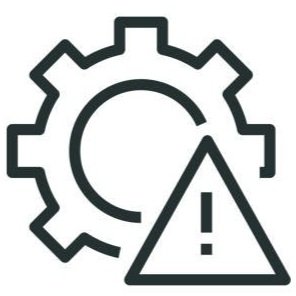
Cyber Risk in Healthcare
“Our healthcare organization benefits from the Birdseye Cyber Risk Management application by Ostrich Cyber-Risk. It efficiently identifies and prioritizes significant risks, measures their financial impact on our enterprise, and facilitates compliance with regulatory requirements and industry standards. This allows us to take remedial actions and communicate effectively with non-technical stakeholders such as the Board, CEO, and CFO in their language.”
— Fred Shepherd, CISO, Healthcare
Unraveling Cyber Risk in Healthcare through Quantification
Healthcare organizations handle vast amounts of sensitive and confidential patient information, including personal health records, financial data, and other personally identifiable information.
Common Problems You Face
Increased Cyber Attacks
Cyber risk is not just an IT issue but an enterprise risk that affects every aspect of the organization. In healthcare, it’s important to evaluate cyber risk in terms of potential impact on patient care and safety in hospitals and health systems.
Budget Prioritization
As expectations grow and resources shrink, security leaders face the challenge of refining their prioritization methods and effectively communicating them to business counterparts. Emphasizing value in business terms becomes essential.
Compliance
Compliance in healthcare is a dynamic and critical process that requires a comprehensive and proactive approach. Ostrich can help comply with HIPAA, PII, & HICP.
Healthcare organizations are better equipped with Ostrich Cyber-Risk.
“Our healthcare organization benefits from the Birdseye Cyber Risk Management application by Ostrich Cyber-Risk. It efficiently identifies and prioritizes significant risks, measures their financial impact on our enterprise, and facilitates compliance with regulatory requirements and industry standards. This allows us to take remedial actions and communicate effectively with non-technical stakeholders such as the Board, CEO, and CFO in their language.”
— Fred Shepherd, CISO, Healthcare
Proactive risk management
Cyber risk quantification facilitates a proactive approach to cybersecurity. It allows organizations to identify potential weaknesses and take preventive measures to reduce the likelihood of a cyber incident, rather than merely reacting after a breach has occurred.
Assess risk over time
Quantifying cyber risks helps healthcare organizations prioritize their cybersecurity efforts and allocate resources effectively. By identifying the most significant risks, organizations can focus on mitigating the vulnerabilities that pose the greatest threat to their operations and data.
Business continuity
Cyber incidents can disrupt healthcare operations, leading to downtime and affecting patient care. Understanding cyber risks allows organizations to develop robust business continuity and disaster recovery plans to ensure continuity of critical services even in the face of cyber threats.




